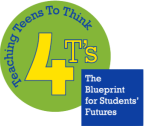There are several apps available for reading, and if you don’t have a kindle, your smartphone will work just as well for very little money. There are apps that cost a few dollars a month that will give you access to hundreds, if not thousands, of titles. Find an app that works for you, and start reading on your down time without having to haul a book or kindle around.
2. Research how to do something you’ve never tried but want to
If you’ve always wanted to learn to do something but never have the time and you find yourself with nothing to do but entertain yourself with your phone, use the time to do some research. If you want to play piano, learn to skateboard, take up knitting, or anything else that you just don’t have any experience with, look up the motions you should go through. Start with the basics, and the more time you have alone with your phone, the more you can learn about whatever it is that you want to know how to do.
3. Pocket.com
Pocket is a way to save articles, videos, web pages, and pretty much anything published online so that you can view them later. If, for example, you’re doing research on how to do a new skateboarding trick and want to go back to a video later, you can save it to Pocket until you’re ready to put the video to use. It’s a convenient way to store information without any chaos or extra features. It’s basically a personal database of information that you know you want to refer to again later, and you just have to sign up using your email.
4. Write
Open your notes app and just write something. It doesn’t matter much what you’re writing, but it makes sense that you’ll always have something to write about. We’re continuously thinking about something, so why not write about it? As someone who loves writing and does it almost constantly, I’ve always been one to write down random thoughts and go back to them later to expand on them. I know people who write poetry or the beginnings of stories they might write more of later, notes about apps they’d like to create, music lyrics, reflections, and countless other short spurts of writing inspired by what they’re experiencing and thinking every day.
5. Work on learning a new language or advancing in a language you might already be studying
You can find apps created to help you learn a new language or even just brush up on your foreign language skills, many of which are very cheap. You should find an app that works best for you based on your level of experience with a language, and keep in mind that the languages available in each app will vary and be limited.
6. Read or watch the news
As a journalism major, I try to get as many people as possible to keep up with news in any way they can. I know a ton of people who use Facebook pages for their sources of news, the news stand app on iPhones, or read news online. It’s something that you can access anywhere and from so many sources that there’s no reason not to. It’s always better to be informed and up to date on what’s going on if only so that you have something to talk about when you have no idea what to say to someone.
7. Podcasts
Podcasts are a great way to learn something new, and all you have to do is listen. There are countless series of podcasts to listen to on so many platforms, all of which cover varied topics and use different methods to cover them from one-person story-telling to conversations between several people. You can listen to a podcast to learn about just about anything, so if you have a hobby, an interest in a topic, or you want to catch up on news, search through some podcasts.
8. Install a flashcard app to study for tests anytime, anywhere
This might be your least favorite option, but it’s also probably the most productive thing you could do on your phone. If you have a test or quiz coming up and you’re someone who uses flashcards to review, having a flashcard app will be invaluable to you. You can study at any time regardless of whether you’re at home with all of your notes or class materials, and if you find yourself somewhere and feel like you’re wasting time that you could be using to study (as I often do), pick up your phone and start!
9. Play games to improve your memory
You’ve probably heard of sites like Lumosity that are meant to help you improve your memory, and you might have even tried them out. If you haven’t tried these memory games, the next time you go to play Candy Crush, try finding an app or website and start playing games that will improve your memory instead.
10. Put it away
If you’re still at a loss as to what to do on your phone, try putting it away. It’s great to have a few minutes to just be alone with your thoughts, and you never know what you might hear or see that is so much more interesting or entertaining than whatever you’d be doing on your phone.
-Hope Swedeen
What productive uses have you found for your smartphone? How can you motivate yourself to be more productive?

 RSS Feed
RSS Feed